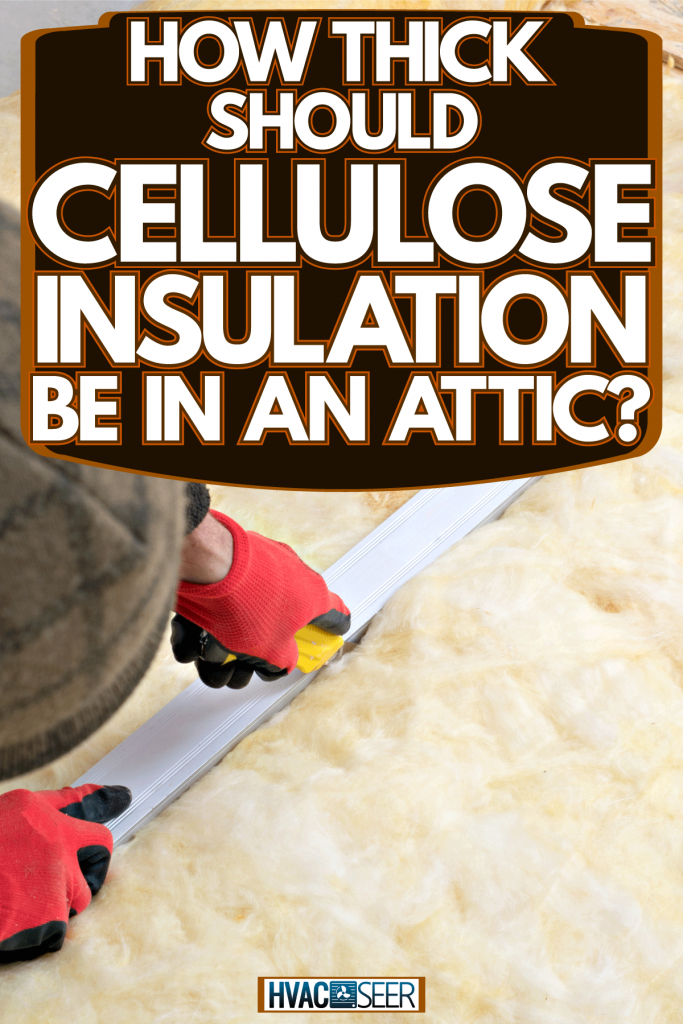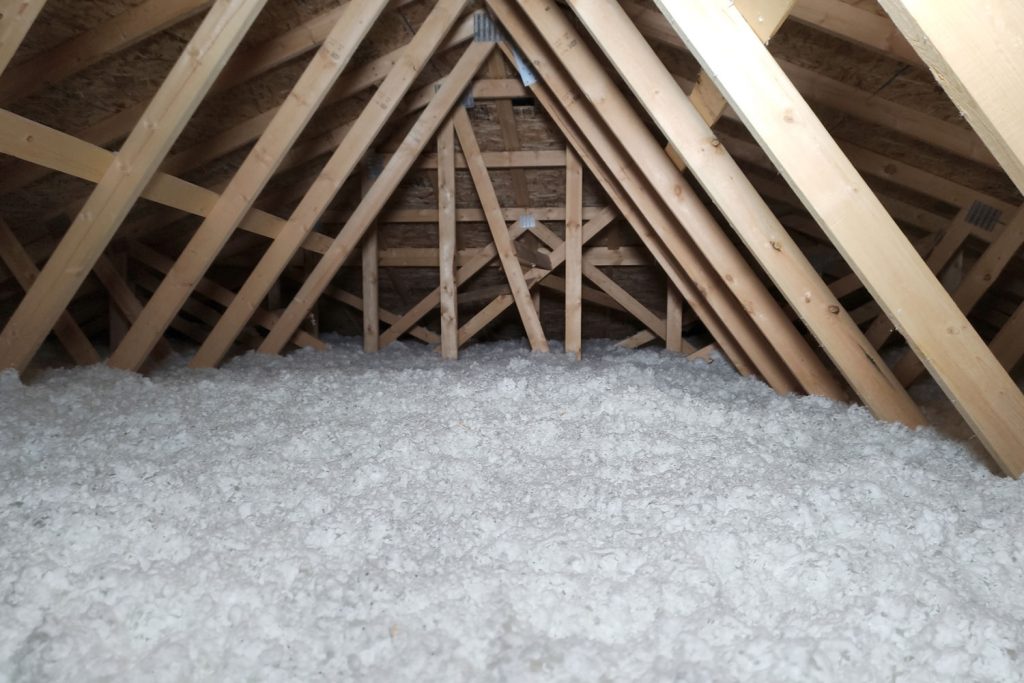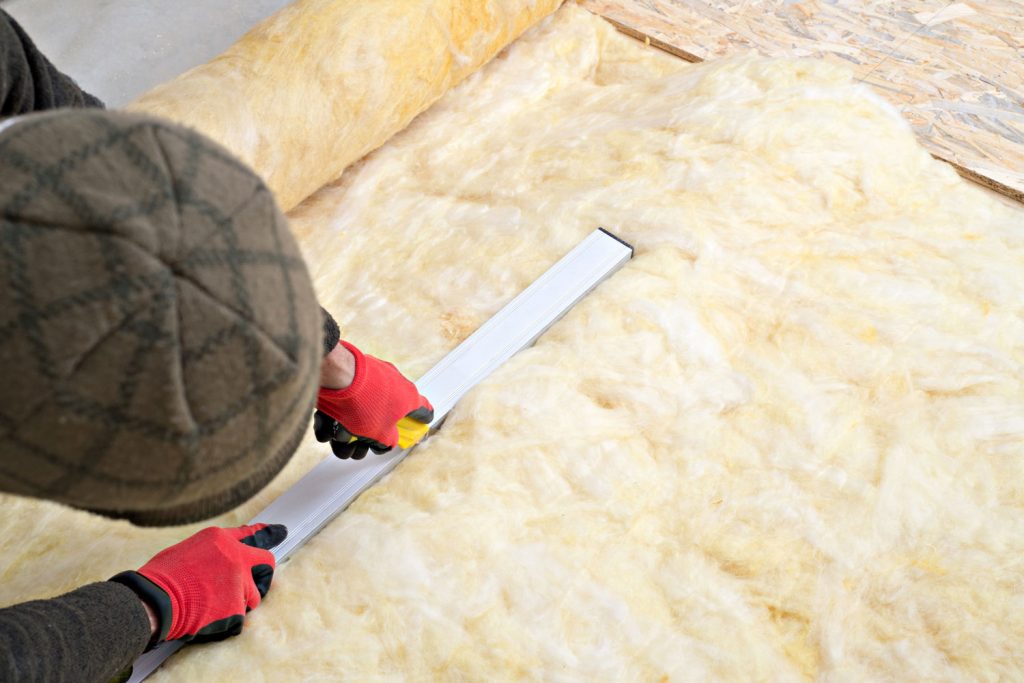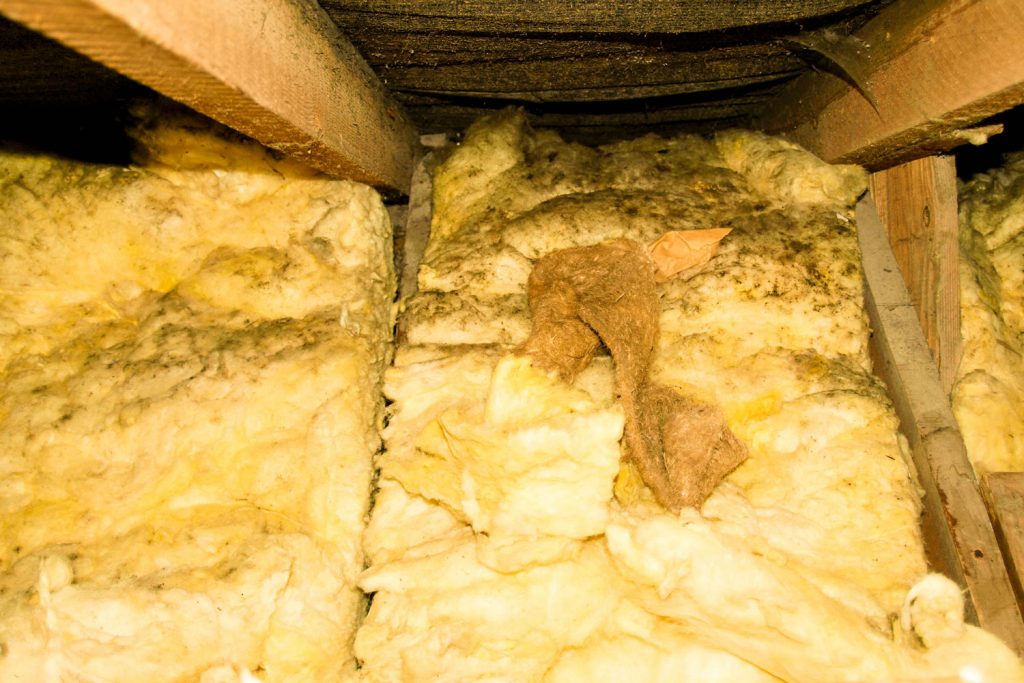With rising energy costs, adequate and complete insulation becomes ever more important. With this in mind, you might be wondering how thick cellulose insulation should be in an attic. In this post, we combine industry professional knowledge and up-to-date research to thoroughly answer your question.
Cellulose insulation should be 8-19 inches deep in your attic. Generally, the proper depth of cellulose depends on the following factors:
- Desired R-value
- Insulation density
- Local climate
- Other attic insulation
- Air sealing
- Local code
Keep reading the rest of this post for details on each of the above bullet points. This guide provides everything you need to make an informed decision about attic cellulose insulation depth. To conclude, we'll answer a few related questions.

How Thick Should Cellulose Insulation Be In An Attic?
Cellulose insulation is essentially ground-up paper and fabric which is treated with a flame retardant. Of all the insulation types, cellulose is one of the most insulative and environmentally friendly.
To measure its depth, some insulation contractors will install permanent rulers throughout an attic. This allows them to see the changing depth as they blow the space using insulation hoses and insulation blowers.

Alternatively, you can always stick a ruler or tape measure into the loose-fill insulation to make your measurement. Either way, it is important to know if your insulation is deep enough and to what level you should plan on filling your attic with cellulose. We cover this decision in the following sections.
Desired R-Value
The first consideration when choosing attic insulation depth is the desired R-value. According to the Washington State University Energy Extension Program, loose-fill cellulose provides between R-3.2 and R-3.8 per inch of depth.
Now, let's combine that with a common general recommendation that most attics should be insulated to an R-value of R-38. Using these values alone, we can divide the range of R-value per inch into the total recommended R-value to get a depth recommendation between 10 and 12 inches.
It is possible to follow this simple arithmetic recommendation to produce a relatively well-insulated attic. However, using this recommendation fails to account for the many other factors that influence the best insulation depth for your home. We cover these other factors below.
Insulation Density
Above, we note that cellulose insulation ranges from R-3.2 to R-3.8 per inch of depth. This variation is due to differences in installed insulation density. This means that the density of the cellulose insulation is more critical than the depth.
Knowing this, loose-fill insulation products come with a specific recommendation for how many square feet they can cover to achieve a certain R-value. This square foot recommendation is determined by product weight, not installed product depth.
Insulation contractors and building inspectors will thus be interested in the total pounds of insulation installed in an attic, not the depth. However, determining how many pounds of insulation you need for a certain R-value requires a bit of math.
We cover how to do this math in the following section. Doing this math will lead to a more precise insulation job. However, if you do not want to bother with pulling out the calculator, you can make the assumption that cellulose will have an average installed R-value of 3.5 per inch.
Calculating the Bags Needed for Your Attic
Click here for loose-fill cellulose insulation from Amazon.
For this example, let us take the product linked above. This loose-fill cellulose bag is printed with several square foot coverages and their corresponding R-values. All loose-fill insulation bags will have similar information printed on the bag.
With this provided information and a little algebra, you can determine how many bags to purchase for any sized attic and any desired final R-value.
Here, we will use the following equations to determine how many bags are needed to insulate a 1,000 square foot attic to R-38.
First, let us determine the pounds per square foot of R-value for the R-49 situation depicted on the bag. We can do this through this equation:
29 pounds = 39 square feet / X pounds of insulation per square foot
This equates to 0.74 pounds per square foot of attic space covered. Now, we can create a ratio with this information to determine the square foot of coverage at R-38:
R-49 / 0.74 pounds per square foot = R-38 / X pounds per square foot
Using algebra, we can simplify this to X = 0.57 pounds per square foot. Now, with this number, we can easily calculate the square foot coverage of one bag at R-38:
29 pounds / 0.57 pounds per square foot = total coverage per 29 pound bag
Running this through a calculator gets the final value of about 51 square feet. Now, divide the square feet per bag into the total square footage of the attic to get the required bag count:
1,000 square feet / 51 square feet per bag = 20 Bags
With some substitution, you can use the above equations for your specific attic and loose-fill cellulose insulation product. This math is helpful because the density of the cellulose plays such an important role in the final R-value of the loose-fill insulation.
Local Climate
Another issue that impacts how deep your cellulose insulation should be is the local climate. Generally, locations with more extreme temperatures stand to gain much more from a more well-insulated attic.

To get more specific, the US Department of Energy has split the United States into 8 different climate zones. The recommended attic insulation ranges from R-30 all the way up to R-60 depending on your location.
It is worthwhile to determine the recommended R-value for your area before insulating your attic. You can find this information by following the above link, calling local building code offices, or through inquiries with local insulation contractors.
Using this government recommendation, the depth ranges from 8-19 inches depending on the insulation density and the desired final R-value.
Other Attic Insulation
Importantly, all recommendations for attic insulation involve the assemblage's total R-value. Until now, we have assumed an attic that is totally without insulation. However, it is very common for homes to already have some insulation in the attic.

Thus, to find how much cellulose to add, you will first have to subtract the existing attic's R-value. Take note, old insulation and poorly installed insulation will have an R-value much lower than the simple R-value per inch recommendations easily found online.
Calling a weatherization service or an insulation contractor is a good way to accurately determine the existing R-value of your attic assembly. Often, municipalities will have rebates and programs that make these home energy assessments more affordable and accessible.
Air Sealing
While air sealing does not specifically influence the recommended cellulose depth, it is very important to consider.
Watch for large bypasses such as around old chimneys, holes above walls, and un-foamed plumbing and electrical penetrations.
Click here for some spray foam air sealant from Amazon.
If air can freely move through these holes, your cellulose will be much less effective. That is to say, you could add insulation with the goal of an R-49 but end up with a much lower R-value because of unaddressed—and now buried—air sealing opportunities.
Therefore, before considering adding cellulose insulation, take the time to fill and block all places where air can freely move from your living space to the attic.
Local Code
Finally, take into account local code. Often cities, counties, and other municipalities will have code requirements that go above and beyond the recommendations by the US Government.

Generally, this code is designed to maximize home energy savings and to reduce the greenhouse gas output of your region. Find out details on your local code by calling officials and/or speaking to home insulation professionals.
How long does cellulose insulation last?
According to the International Association of Building Inspectors, cellulose insulation will last over 100 years if left undisturbed. That being said, the R-value will drop slightly over time due to settling. Also, cellulose insulation is virtually useless if it gets wet.
To learn more about how long cellulose insulation lasts, read this article on the topic: Does Cellulose Insulation Decompose Or Deteriorate?
Is it possible to put too much insulation in an attic?
Yes, you can. An over-insulated attic will make it difficult for the space to properly ventilate. That is to say, if air and moisture cannot escape your attic space because there is too much insulation in your attic, you may begin to experience problems like mold, rot, and ice damming.

Further, once you reach the recommended R-values described above, you are going to get diminishing returns on each additional R-value that you add. Thus, you are spending money on insulation that you will not make back in energy savings.
How much does cellulose insulation settle?
Cellulose insulation settles 15-20% over time. However, this settling rate is considered within the application recommendations that consider the product's installed density.

Therefore, if you follow the pounds per square foot recommendation on the insulation bag, the settled insulation will still have the desired R-value.
To learn more about how much cellulose insulation settles, read this article on the topic: Does Cellulose Insulation Settle? How Much?
Should you insulate between rafters in your attic?
No, you only want to insulate at the surface that separates the conditioned house from the unconditioned attic. For most attics, this is the attic floor which is also the home's ceiling. Also, watch for stub walls that may separate the attic from the conditioned space.
In Closing
In this post, we answered the question of how deep cellulose insulation should be in your attic. As described here, the answer to your question is more complicated than a simple depth recommendation. To conclude, we answered a few related questions. Good luck!


